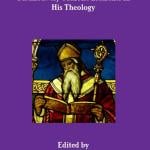
***
This new article appeared earlier today in Interpreter: A Journal of Latter-day Saint Faith and Scholarship:
Loren Blake Spendlove, “And the One Pointed the Way: Issues of Interpretation and Translation Involving the Liahona”
Abstract: In describing the operation of the spindles in the Liahona, Nephi’s statement that “the one pointed the way” in 1 Nephi 16:10 is frequently taken to mean that one of the two spindles indicated the direction to travel. However, Nephi’s apparent use of the Hebrew word האחד (ha’echad)1 may imply a different mechanism in which the direction was being shown when both operated as one. If so, there may be added symbolism of unity and oneness inherent in Nephi’s and Alma’s descriptions of the Liahona. Additionally, I provide a detailed analysis of words and phrases used by Nephi and Alma to describe the Liahona which potentially reveal intriguing Hebrew wordplay in the text.
So did this announcement:
“Tickets for the Witnesses Film Now On Sale”
Including a link to yesterday’s televised announcement of the opening of ticket sales on ABC4’s “Daily Dish” Entertainment segment
***
And here are links to some previously-published articles in Interpreter:
Loren Blake Spendlove and Tina Spendlove, “Turning to the Lord With the Whole Heart: The Doctrine of Repentance in the Bible and the Book of Mormon”
Abstract: Repentance is considered one of the foundational principles of the gospel. As demonstrated in this article, there is a harmony in how repentance is portrayed in the Old Testament, New Testament, and Book of Mormon. In all three books the principle of repentance is shown to be a two-part process of turning away from sin and returning to the Lord through good works. Just as faith has been called “active belief,” repentance could be called “active remorse,” and must be accompanied by good works to be effective in our lives. The goal and end result of sincere repentance is a turning to the Lord with the whole heart, enabling us to return to the presence of God.
Daniel C. Peterson, “Many Witnesses to a Marvelous Work”
Review of Dennis Largey, Andrew Hedges, John Hilton III, and Kerry Hull, eds. The Coming Forth of the Book of Mormon: A Marvelous Work and a Wonder, Religious Studies Center, Brigham Young University, Provo, Utah, in cooperation with Deseret Book Company, Salt Lake City, 2015, pp 308.
Abstract: At the end of October each year, speakers from the Church Educational System, as well as other gospel scholars, gather at Brigham Young University to make presentations at the Sidney B. Sperry Symposium. The Coming Forth of the Book of Mormon: A Marvelous Work and a Wonder is a compilation of the addresses given at the forty-fourth symposium, in 2015. This volume does not so much delve into the doctrine of the Book of Mormon as it studies the history behind its coming into the world. Just as the doctrine itself is inspirational, the story behind the coming forth of the Book of Mormon serves as an inspiration and a testament to its truthfulness.
Dennis Newton, “Nephi’s Change of Heart”
Abstract: How long did it take Nephi to compose his portions of the “small account?” Careful text analysis and data mining suggest that “Nephi’s” texts may have been composed across periods as great as forty years apart. I propose a timeline with four distinct periods of composition. The merits of this timeline are weighed, and some thoughts are explored as to how this timeline alters the reader’s perceptions of Nephi. The net effect is that Nephi becomes more sympathetic, more personable, and more relatable as his record progresses and that the totality of Nephi’s writings are best understood and interpreted when the factor of time is considered.
Duane Boyce, “The Ammonites Were Not Pacifists”
Abstract: Although it is common to believe that the Ammonites were pacifists, the report of their story demonstrates that this is a mistake. Appreciating the Ammonites’ non-pacifism helps us think more clearly about them, and it also explains several features of the text. These are textual elements that surprise us if we assume that the Ammonites were pacifists, but that make perfect sense once we understand that they were not. Moreover, in addition to telling us that the Ammonites were not pacifists, the text also gives us the actual reason the Ammonites came to eschew all conflict — and we learn from this why significant prophetic leaders (from King Benjamin to Alma to Mormon) did not reject the sword in the same way. The text also reveals the intellectual flaw in supposing that the Ammonites’ early acts of self-sacrifice set the proper example for all disciples to follow.
Matthew L. Bowen, ““O Ye Fair Ones” — Revisited”
Abstract: The best explanation for the name “Nephi” is that it derives from the Egyptian word nfr, “good,” “goodly,” “fine,” “fair,” “beautiful.” Nephi’s autobiographical wordplay on his own name in his self-introduction (and elsewhere throughout his writings) revolves around the evident meaning of his name. This has important implications for how the derived gentilic term “Nephites” was understood over time, especially among the Nephites themselves. Nephi’s early ethno-cultural descriptions of his people describe them as “fair” and “beautiful” (vis-à-vis the Lamanites). These early descriptions subsequently become the basis for Nephite ethno-cultural self-perceptions. The Nephites’ supposition that they were the “good” or “fair ones” was all too frequently at odds with reality, especially when Nephite “chosenness” was understood as inherent or innate. In the end the “good” or “fair ones” fell (Mormon 6:17‒20), because they came to “delight in everything save that which is good” (Moroni 9:19). The Book of Mormon thus constitutes a warning against our own contemporary cultural and religious tendency toward exceptionalism. Mormon and Moroni, like Nephi their ancestor through his writings on the small plates, endeavor through their own writing and editorial work to show how the “unbelieving” descendants of the Nephites and Lamanites can again become the “good” and the “fair ones” by choosing to come unto Christ, partaking of his “goodness,” and doing the “good” stipulated by the doctrine of Christ.
Brant A. Gardner, “Beauty Way More Than Skin Deep”
Review of Royal Skousen, Robin Scott Jensen, eds., The Joseph Smith Papers: Revelations and Translations Volume 3, Part 1: Printer’s Manuscript of the Book of Mormon 1 Nephi–Alma 35 (Salt Lake City: The Church Historian’s Press, 2015). pp 575. $89.99.
Abstract: All of the volumes in the Joseph Smith Papers series are beautifully presented, with important photographic and excellent typographic versions of the texts. This volume continues by providing this treatment for the Printer’s Manuscript of the Book of Mormon.










